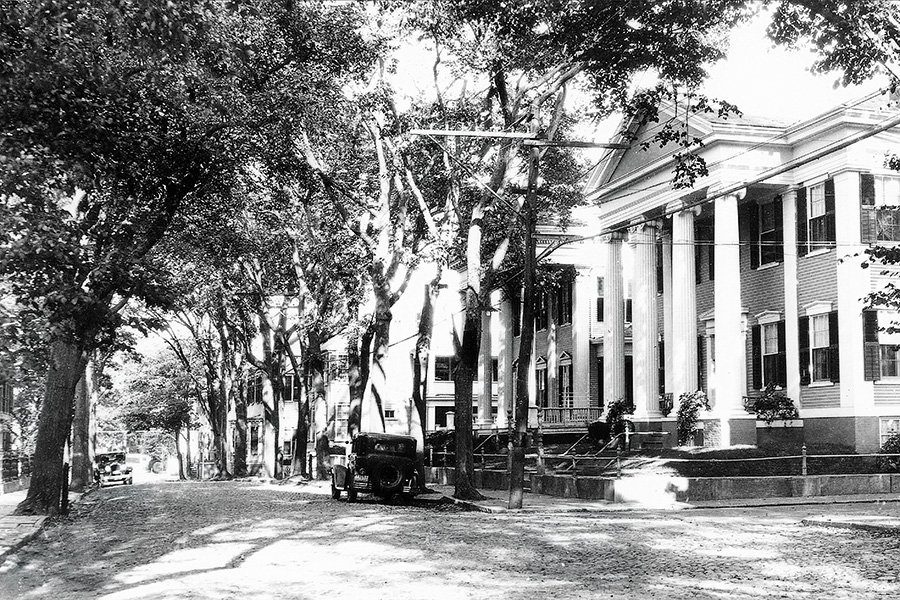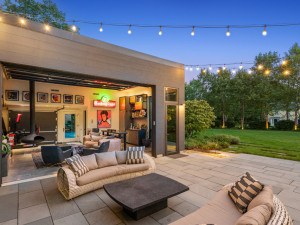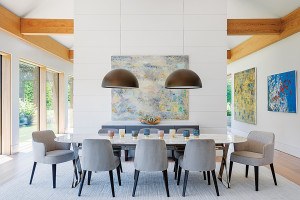The Organization Protecting Nantucket’s Cultural and Architectural Legacy
Thanks to the 130-year-old Nantucket Historical Association, stories about the island’s multilayered cultural heritage live on.

The Hadwen House at 96 Main Street, circa-1928. The Greek Revival home was built in 1846 by whaling merchant and silver retailer William Hadwen at the peak of Nantucket’s whaling prosperity. / Photo courtesy of the Nantucket Historical Association
Nantucket’s whaling legacy is universally recognized. Along with the undisputed fact that the island has a singular, unspoiled beauty, what most people without deep ties to the locale know about Nantucket is that it was the whaling capital of the world in the 1700s.

Among the NHA’s assortment of furnishings is this miniature tall-case clock made on Nantucket by Wallace C. Brown, 1889/90. / Photo by the Nantucket Historical Association
And yet, says Niles Parker, executive director of the Nantucket Historical Association (NHA), “From a cultural perspective, Nantucket’s history encompasses so much more than whaling.”
Indeed, dig slightly beneath the surface, and one learns that Nantucket suffered a near-catastrophic decline after the prosperous whaling era ended in the mid-19th century. The island was all but abandoned for nearly 50 years, which discouraged rebuilding or the demolition of old structures. Largely forgotten, the lavish residences built by sea captains, along with the architecture of the island’s earliest Colonial-era settlers, survived through neglect.
By the late 19th century, efforts were being made to preserve Nantucket’s historic structures. In 1894, the NHA was founded as the cultural safeguard of the island, says Parker. Among the first properties acquired by the NHA was the Old Mill, said to be built in 1746 and considered the oldest operating windmill in the United States. “Over the next century, the NHA acquired roughly two dozen structures on the island,” Parker says. Others include the oldest house on the island (circa 1686) and Hadwen House, an 1846 Greek Revival mansion built at the height of Nantucket’s whaling prosperity. In 1966, the entire island of Nantucket was deemed a National Historic Landmark for its large array of intact late-18th- and early-19th-century architecture.
As with whaling, the island’s architectural legacy is but one facet of Nantucket’s cultural heritage. Others include the island’s rich history in decorative arts and crafts. “We’ve long been an inventive, creative community out here on the Atlantic Ocean,” says Parker, while noting that in addition to being a historic preservation organization, the NHA is “a storytelling organization. Our goal is to preserve all of Nantucket’s artifacts and histories and to keep telling its stories for centuries to come.”

The Oldest House on Sunset Hill, also known as the Jethro Coffin House, was built in 1686 and is believed to be the oldest residence on Nantucket still on its original site. / Photo by Laurie Richards

Built in 1746, the Old Mill is believed to be the oldest operating windmill in the United States. It is the only surviving mill of the five that once stood overlooking Nantucket. / Photo by Laurie Richards
To promote its mission, the NHA relies heavily on fundraising efforts, the largest of which has become the annual Nantucket by Design, a multiday experience devoted to celebrating design and the island’s authentic nature featuring acclaimed keynote speakers, panel discussions, and workshops. “Nantucket by Design began about a decade ago as an offshoot of the Nantucket Summer Antiques Show, which has taken place for over 30 years,” Parker says. The appeal of Nantucket by Design has evolved exponentially, drawing more and more designers and design aficionados to the island every year.
This year, Nantucket by Design will focus on craftsmanship. It’s helmed by new event chairs, longtime NHA board members Marla Mullen Sanford and Bill Richards, who are committed to elevating the event. Programming will take place over the course of more calendar days than previously and earlier in the season, from July 15 to 18. The star-studded speaker list includes Ken Fulk, Mark Sikes, Aerin Lauder, Meg Braff, Victoria Hagan, and Kit Kemp, among others.
In addition to speakers, this year’s calendar will include unique events, says Sanford, including an open-house cocktail party with Elin Hilderbrand, experiential designer dinners, panels with various personalities across all sectors of design, and master classes incorporating craftsmanship. After a Nantucket by Design kickoff at the Colony Palm Beach earlier in the year, the hotel heads to the island this summer for an immersive pop-up during the event.
“Nantucket is a perfect backdrop for exploring the theme of craftsmanship, given its rich history of skilled workmanship from the original settlers, the Wampanoag Tribe, to the whaling era’s global influences all the way through the 1960s artist colony and current-day small businesses,” says Sanford, adding that historical techniques synonymous with the island such as scrimshawing, decorative knot tying, sailor’s valentines, and basketweaving will be touched on during Nantucket by Design.

Nantucket by Design’s kickoff party last year was held on the lawn at a private home overlooking the harbor. / Photo by Laurie Richards
The event’s enhanced experience keeps the mission of the NHA its core focus, as acquiring the necessary operational funding is consistently an uphill climb. For one, the organization is desperately in need of more exhibition space. While the NHA’s main facility, the Whaling Museum, has more than 1,000 permanent works of art, artifacts, and treasures on display, the array represents only about 5 to 8 percent of its vast trove, which includes, according to Michael Harrison, chief curator of the NHA, “an enormous costume and textile collection. Some of it represents the Quakers; other pieces relate to how Nantucket residents connected to fashion on the mainland.”
Collections include countless books, journals, and paintings. Furniture is prominent as well. “We have pieces that represent how people lived on the island through various centuries,” Harrison says. “There are representations of influences that people were looking to in Boston, New York, and Philadelphia in 1790 along with the Windsor chairs that local cabinetmakers created at the time to look like them.”
The number of items that represent craftsmanship is robust, and while some of the collection rotates on display from time to time, and Hadwen House is designated as a decorative-arts museum with furniture and antiques and locally made ceramics, carvings, and baskets, much of it remains unseen due to the lack of display area. “One of our main goals is getting more gallery space,” Parker says. “We’re confident that it will eventually happen.”
First published in the print edition of Boston Home’s Spring 2024 issue, with the headline “National Treasures.”


